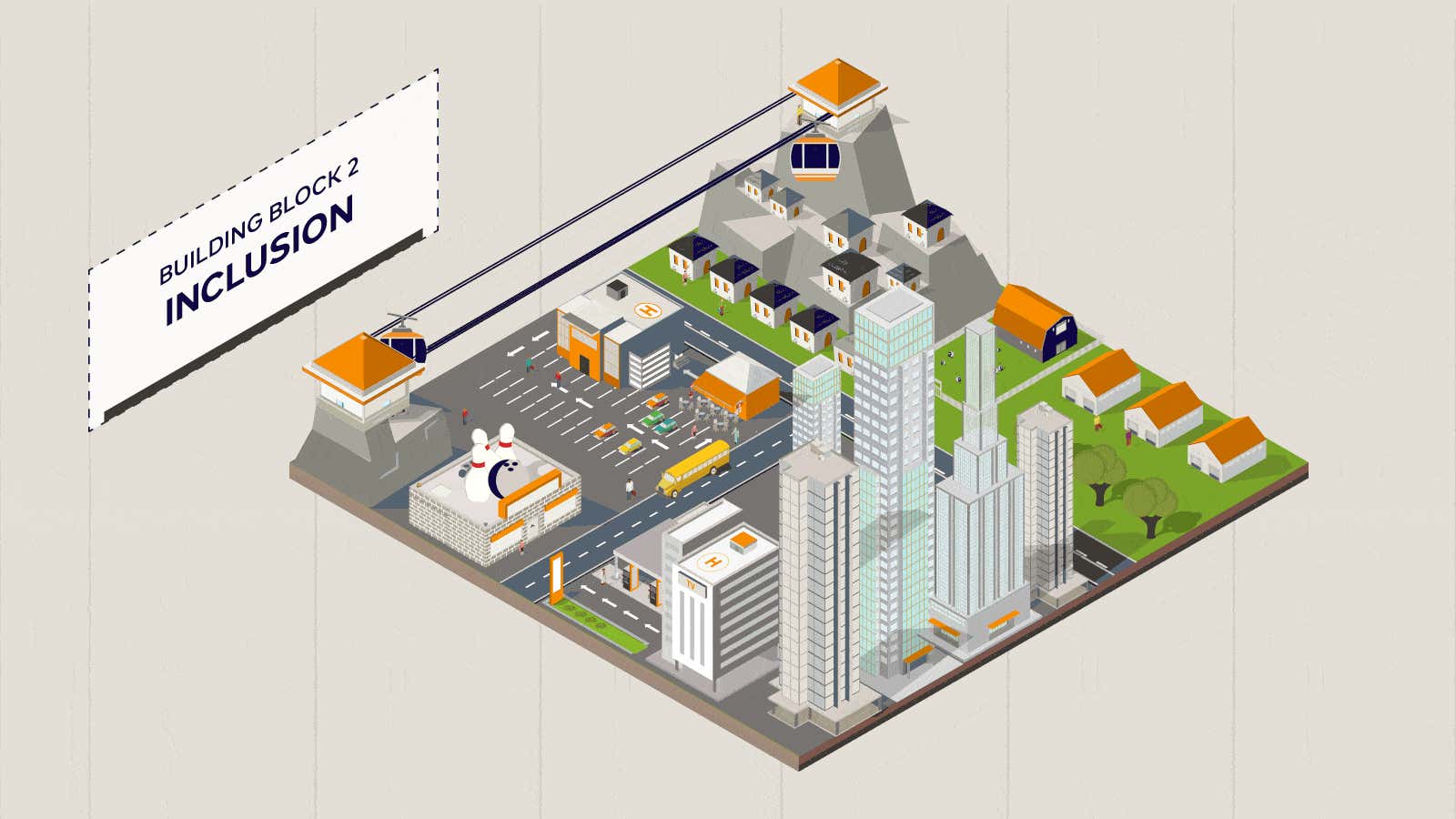The National Mall in Washington, DC. The 1909 Plan of Chicago. The San Antonio Riverwalk. These urban icons all grew from a planning philosophy in the 1890s and 1900s focused on how we live and how we could live better. Leading thinkers of that era called their idea the City Beautiful Movement, which sought to make urban areas more beautiful, more grandiose, and more democratic.
Today, a new conversation is underway: how to forge future cities in a digital age. As the percentage of the world living in urban areas swells—from 54% today to an expected 66% by 2050, according to the United Nations—citizens, mayors, and government officials are racing to understand how the private and public sector can work together to improve people’s lives through technology. They seek to make cities more hospitable, stronger in the face of adversity, and better suited to a rapidly changing global environment.
Call it the City Possible Movement.
The City Possible Movement encompasses the full spectrum of work being done to improve life in urban areas. Whether its successes are referred to as smart cities, connected cities, future-proof cities, or digital cities, the movement toward a City Possible ultimately seeks to give citizens access to all of the networks that power the modern economy—including transportation, energy, education, finance, and communication.
Doing so “requires a holistic approach to partnering that involves state and city governments and private corporations, but also civil society and academia,” said Hunter Woolley, who oversees Mastercard’s work with cities in North America.
Leaders in the public and private sectors are imagining what’s possible for their cities, focusing on building blocks that form the foundation of these ideas: citizen-centered design, inclusion, sustainability, and resilience. Here’s a look at how one of those building blocks, inclusion, is coming to life in Medellín, Columbia.
Inclusion
Definition: Creating infrastructure that supports and includes all citizens—whether in regard to financing, housing, education, public space, or otherwise.
Where: Medellín, Colombia
Problem: Medellín had recorded thousands of homicides per year and was known as one of the most dangerous cities in the world. Many of these deaths occurred in the disconnected favelas, or slums, where the drug cartels made their presence most felt.
Approach: Over the last 25 years, Medellín has blossomed into a model of inclusion by establishing an extensive public transportation system. That system includes a gondola network connecting the city center to outlying, and less affluent, areas in the hillsides. These gondolas, along with an escalator system, have dramatically reduced the travel burden for the city’s poorer and more mountainous areas.
Detail: “We know what we’re doing here and we’ve come a long way,” said Alejandro Echeverri, director of the Center of Urban and Environmental Studies at the EAFIT University in Medellín. “But everything is fragile, precarious. Medellín has done some successful things, but you can never say: ‘It is finished.’”
Continuing challenge: In many ways, the city has flourished following the development of its transportation infrastructure. According to Colombia’s National Statistics Department, the number of people living below the poverty line in Medellín fell to 14.3 percent in 2015, from 22 percent in 2010. Still, violence persists: There were 495 homicides in 2015, down from 1,649 in 2011, which was also down from the peak of 6,349 in 1991.
Read stories exploring other building blocks—citizen-centered design, sustainability, and resilience—that are taking shape in cities around the world.
Click here to learn how Mastercard is helping to create more inclusive, sustainable, and resilient cities.
This article was produced on behalf of Mastercard by Atlantic Media Strategies and not by the Quartz editorial staff.
